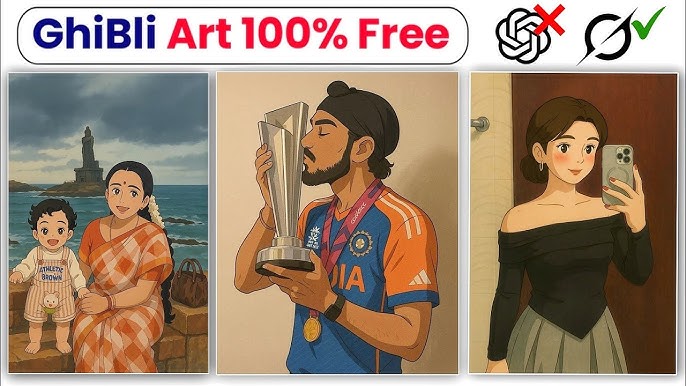The Magic of Ghibli Art: A Deep Dive into Studio Ghibli’s Iconic

The Magic of Ghibli Art: A Deep Dive into Studio Ghibli’s Iconic Aesthetic
Studio Ghibli has captivated audiences worldwide with its breathtaking hand-drawn animation and whimsical storytelling. Founded in 1985 by Hayao Miyazaki, Isao Takahata, and Toshio Suzuki, the studio has created some of the most beloved animated films of all time. What truly sets Ghibli apart, however, is its distinct art style, which blends fantasy, nostalgia, and meticulous detail. Let’s explore what makes Ghibli’s art so magical.
The Signature Ghibli Aesthetic
Studio Ghibli’s art is known for its dreamlike quality, but it also possesses a deep sense of realism. This balance is achieved through:
- Hand-Drawn Animation – Unlike many modern studios that rely heavily on CGI, Ghibli remains committed to traditional hand-drawn animation. Each frame is meticulously crafted, resulting in a rich visual experience.
- Lush Backgrounds – Ghibli’s landscapes are breathtaking, often inspired by real-world locations. From the rolling green hills of “My Neighbor Totoro” to the bustling bathhouse of “Spirited Away,” every scene is painted with incredible detail and vibrant colors.
- Soft Color Palettes – The studio employs soft, watercolor-like hues that give its films a warm, nostalgic feel.
- Expressive Character Designs – Ghibli characters are simple yet highly expressive, with wide eyes and fluid movements that convey deep emotions.
- Attention to Everyday Beauty – One of Ghibli’s hallmarks is its ability to find beauty in the mundane. A pot of simmering food, raindrops on a window, or the rustling of leaves all contribute to the immersive world-building.
The Role of Nature in Ghibli Art
Nature plays a vital role in Ghibli films, often acting as more than just a backdrop. The studio’s artists emphasize the harmony between humans and the natural world, reinforcing themes of environmentalism. Films like “Princess Mononoke” and “Nausicaä of the Valley of the Wind” showcase stunning forests, creatures, and landscapes that feel alive.
Ghibli’s Influence on Art and Animation
Ghibli’s unique aesthetic has influenced countless artists and animators around the world. Many indie animators and digital illustrators take inspiration from its lush backgrounds, warm lighting, and nostalgic atmosphere. Even in video games, titles like “Ni no Kuni” and “The Legend of Zelda: Breath of the Wild” incorporate Ghibli-like art styles.
Conclusion
Studio Ghibli’s art is more than just beautiful animation—it’s an experience that transports viewers to magical worlds filled with wonder and emotion. Through its dedication to hand-drawn animation, intricate details, and heartfelt storytelling, Ghibli continues to inspire generations of artists and dreamers alike.
If you’re an artist or illustrator, drawing inspiration from Ghibli can elevate your work, adding depth, emotion, and a touch of magic. Whether it’s through color choices, intricate backgrounds, or the appreciation of everyday beauty, the influence of Studio Ghibli will remain timeless in the world of art.



